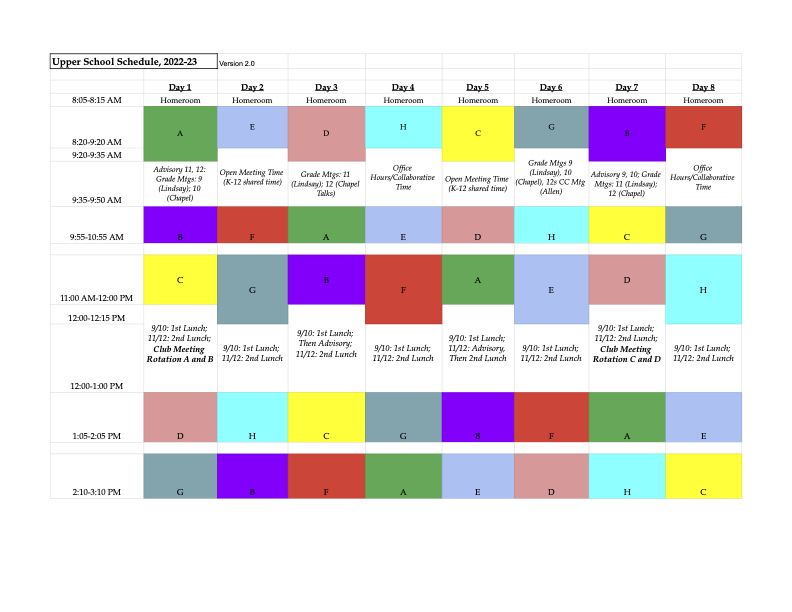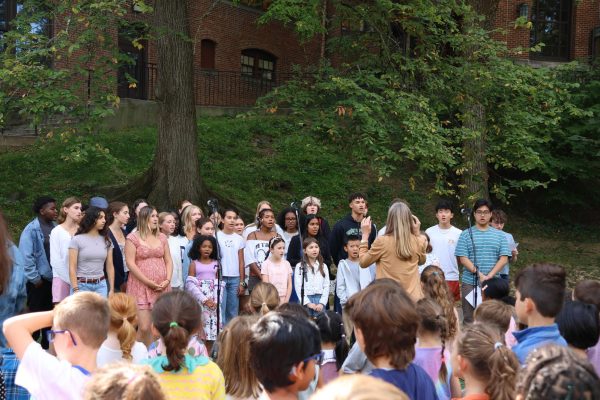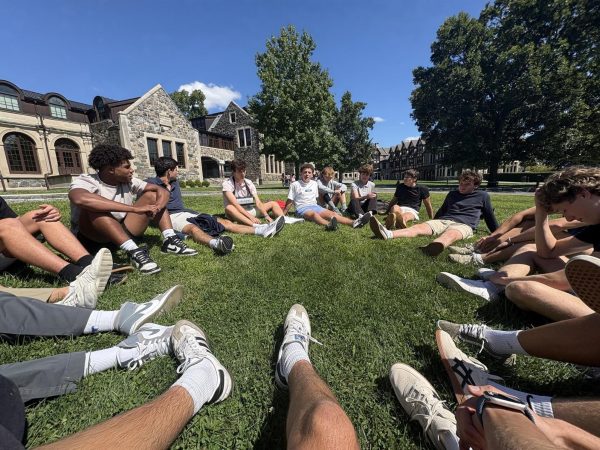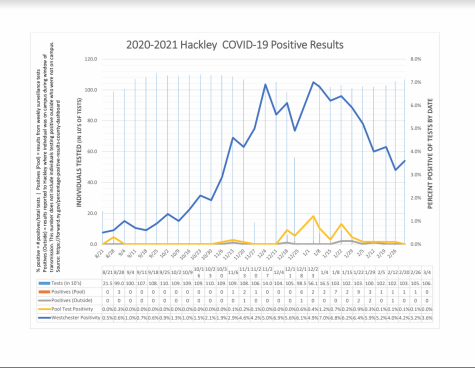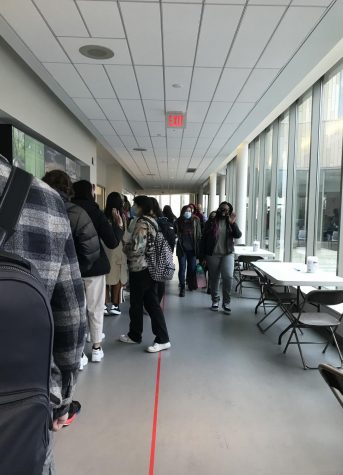Anticipating the Revised Daily Schedule
Entering the 2022-23 school year, Hackley has decided to integrate a new schedule with the goal of improving student and teacher life.
When faced with designing a new schedule, the scheduling committee had to prioritize the top concerns for student and teacher life to integrate into the new schedule. Steven Bileca, Assistant Head of School for Academic Affairs, was one of the leaders of the scheduling committee and noted the top four questions that were considered: “How to create a learning pace that best promotes both student well-being and deep learning? How to create flexible, dedicated, and coordinated time to strengthen community connections within and across the three divisions? How to create cycle-day alignment between the three divisions? How to create dedicated faculty and student collaboration time in various configurations?”
There are many new additions and features to the schedule which address pace, amount of work, stress of students, and time management. The first change to the schedule is the change from a seven-period day to a five-period day. The five-period day means fewer transitions between classes which makes for a less hectic pace. The five-period day also means that there will be fewer discrete homework assignments per night.
The following change to the schedule is the placement of the class patterns during each cycle. For example, if a student were to have math last period on day 3, they would then have math first period on day 4. The new placement of the subjects means that when student-athletes leave early, they will not start the next day with a class they have missed.
The next change to the schedule is moving from a seven-day class cycle to an eight-day class cycle. The eight-day cycle will result in more open periods and will enable a more balanced scheduling of classes.
The following change is altering the time of each class period from 45 minutes with one 70-minute period to 60-minute class periods with one stretch period that can last up to 75 minutes. The 60-minute class times will encourage class activities that are interactive and student-focused to lead to deeper learning.
The last essential addition to the new schedule is the addition of the band of community times each morning. These community times will allow for dedicated time for things like advisory, club meetings, division-specific assemblies, school-wide assemblies, and tutorial time to work with teachers.
With the changes to the schedule, in terms of the time allotted for each class and the number of times classes meet per week, teachers have had to reconsider their curriculum plans to comply with the new adjustments. Bill McLay, physics teacher, has had to think about changes to his curriculum for next year. Mr. McLay teaches two different physics classes, physics for 9th graders and the advanced physics class, which is open to 11th and 12th graders.
For McLay’s advanced physics class, he notes that the schedule adds many advantages to the course. It adds many time advantages and makes it so that the class can have adequate time for presentations, construction building, and challenge labs.
In terms of McLay’s ninth-grade class, he is faced with more challenges. Part of the success of his class has been being able to teach in small chunks. With the changes to the schedule, McLay has to put more into each class time than he would like, which will be tricky to figure out how to do so. He is also faced with the challenge of not having enough time to get through the whole curriculum that he can now with the current schedule. He will have to cut material which is never good, and it is tricky to figure out what information he can cut.
Even though many challenges are created with the new schedule, there are benefits for his 9th-grade physics class. On the plus side, with the longer classes, students will have more time to ask questions in class and more time to digest information. There is also more time for labs and less possibility of labs running over into the subsequent class periods.
Mr. McLay states his thoughts on the changes, “change is difficult. I am a big embracer of change, but sometimes finding the reasoning behind the change is difficult. However, this is the task I have been given, and I plan to go after it. I do not plan to compromise my teaching in any way or alter my expectations of students. I am still going to be the same teacher I am, I just have to fit it into a new way of doing it.”
One concern of students is the change in the amount of homework given because the classes meet less frequently. Mr. McLay addresses this issue, claiming that he does not plan on changing the amount of homework he gives. He hopes not to change the amount he gives as he believes what he currently assigns is very fair and does not want to skew that.
In terms of keeping students engaged, McLay does not see this as an issue. He does not have problems in 70 minutes now, so he does not see that as a problem in the future.
McLay’s number one worry with the changes to the schedule is the class not meeting as often in a cycle. “I’m more concerned about the number of times I see my students in person rather than the number of minutes I spend with them. So my top concern is not meeting with my students as often in a cycle.”
Sai Shaw, 12th grader, has concerns about next year’s new schedule. Sai has ADHD and has a hard time staying focused for the entirety of the 70-minute periods this year. She is worried about being able to remain engaged next year throughout all her classes as each period is going to be extended. “One 70-minute period per day is enough for me and works for the curriculum. I like our current schedule and am confused about why changes have to be made.”

